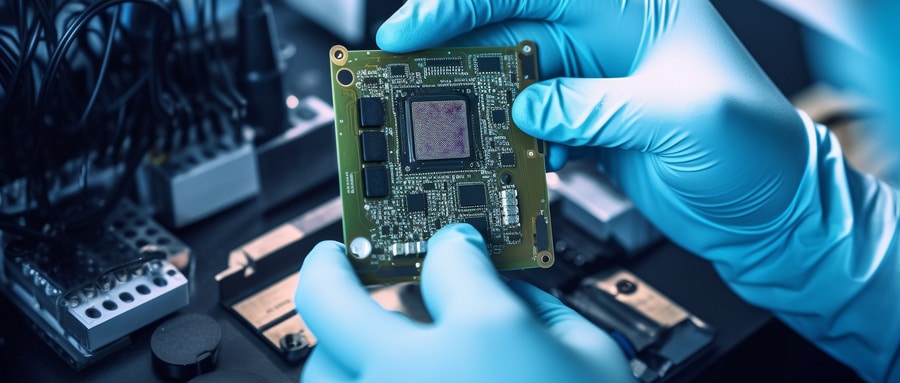Decoding the Significance of Annular Ring PCB: An In-Depth Guide
Understanding printed circuit boards (PCB) is crucial in electronics. Within this niche, certain terminology and concepts – like annular rings – play an essential role. Our comprehensive guide strives to simplify these seemingly complex terms by offering an in-depth examination of annular rings’ relevance in PCB design as well as any critical issues they present during their design phase. Upon finishing this guide, you’ll have developed the tools needed for optimizing its use within PCB design.
Definition of Annular Ring PCB:
An annular ring is an essential component of PCBs, particularly around drill holes. This area of copper pad extends around each drilled and plated hole, and measures from its edge to the perimeter of its copper pad – playing a critical role in its efficient functioning. Although seemingly inconsequential at first glance, its role has great significance for overall system functioning.
Annular Rings Play a Vital Role in PCB Assembly:
Annular rings play an integral role in creating reliable interconnections within multilayer PCBs. If there is an issue related to them, this could wreak havoc with functionality and reliability of the board itself. They provide solderable regions for component leads or vias to create electrical connectivity across the board – their size must therefore be optimized so as to guarantee proper connection under temperature fluctuations that cause it to expand or contract over time.
Issues Involved with Annular Ring PCB Design:
Designing annular rings may present you with certain challenges, including breakouts wherein the drill moves outside the ring area and leads to weak connections, and over etching which reduces its width, weakening connections further. Being aware of these problems in advance allows for proactive solutions and impacts the durability of PCB boards directly.
Preventive Methods for Secure Annular Ring PCB Design:
Designers looking to prevent breakouts and over etching must adopt best practices such as planning a sufficient ring width and selecting appropriate-sized landing pads. By employing laser-based PCB drilling technology, precision can be maintained, thus decreasing the chance of breakouts or over etching. Furthermore, high-quality etching solutions help prevent the thinninig of annular rings.
Recognizing the subtleties of annular ring pcb design is key to creating reliable and efficient printed circuit boards. By carefully considering all variables – such as application type, environmental conditions and level of precision needed in drilling and etching processes – effective planning and correct execution will lead to optimized PCB functionality.
Continued learning and exploration can result in revolutionary products within the electronics field, with annular rings playing an essential part in this pursuit. Understanding their essential properties brings you one step closer.
Empower yourself with knowledge by understanding this essential PCB component, and unleash the true potential of your electronic designs!

Thank you for reading our comprehensive guide on annular rings PCB! Please share this knowledge with others who can take advantage of it! Whether an experienced PCB designer or just starting out, PCB design can be both fascinating and complex; each detail counts and annular rings play a pivotal role here! So keep learning, discovering and innovating in this electrifying field of electronics!
FAQ:
- Q: What is an Annular Ring PCB?
A: The annular ring in a PCB refers to the area of copper pad that extends around the circumference of a drilled and finished hole. It creates the electrical connection between layers in a multi-layer PCB. - Q: How is Annular Ring width calculated?
A: The width of an annular ring is calculated by subtracting the diameter of the hole from the diameter of the pad, and then dividing the result by two. - Q: Why is the Annular Ring important?
A: The annular ring ensures the establishment of strong and reliable electrical and mechanical connections between different layers in multilayer PCBs. - Q: What happens if the Annular Ring is too small?
A: If the annular ring is too small, it may lead to issues like breakout, which happens when a hole is drilled too close to the pad, leaving insufficient ring, and potentially compromising the PCB’s performance and reliability. - Q: Can you adjust the size of the Annular Ring?
A: Yes, the size of the annular ring can be adjusted in the PCB design process. However, the capability of the PCB manufacturer also determines the minimum annular ring size that can be produced. - Q: What is a Plated Through Hole (PTH)?
A: In context, a Plated Through Hole is a hole that has an annular ring and is plated with copper all the way through the PCB. It provides an electrical connection between the different layers of the PCB. - Q: What is meant by “Annular Ring Breakout”?
A: Annular ring breakout, also known as drill breakout, is a manufacturing defect where the hole is drilled too close to or outside the copper ring, which can negatively impact the integrity of the PCB. - Q: How does IPC standard deal with Annular Ring specifications?
A: IPC (Institute of Printed Circuits) standards specify minimum requirements for annular ring widths. The exact values depend on the particular IPC class that a product falls under. - Q: Which software tools are commonly used for managing Annular Rings PCB design?
A: PCB design software like Altium Designer, Eagle, and KiCad ship with features that help manage and adjust the size of annular rings in the PCB design process. - Q: What factors affect the size of the Annular Ring PCB?
A: Factors such as pad size, hole size, drill accuracy, PCB material considerations and manufacturing processes all affect the size and quality of the annular ring.























